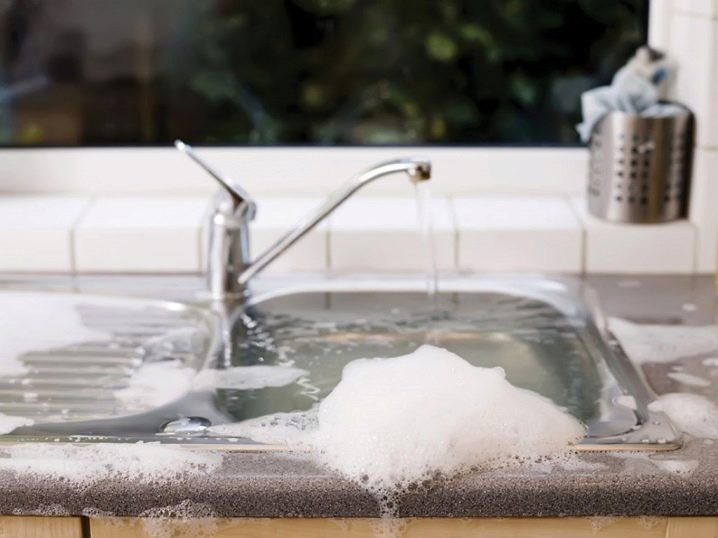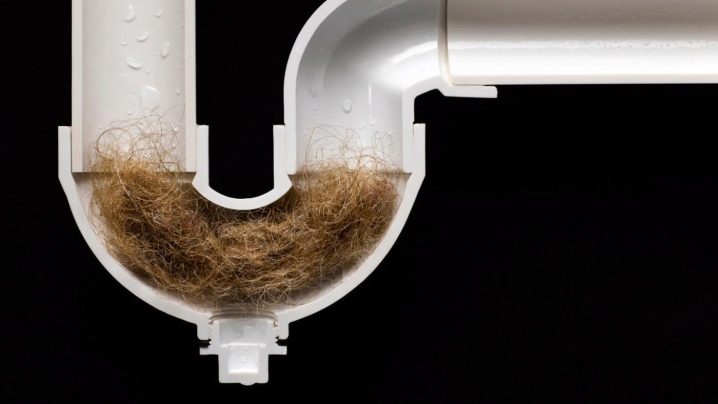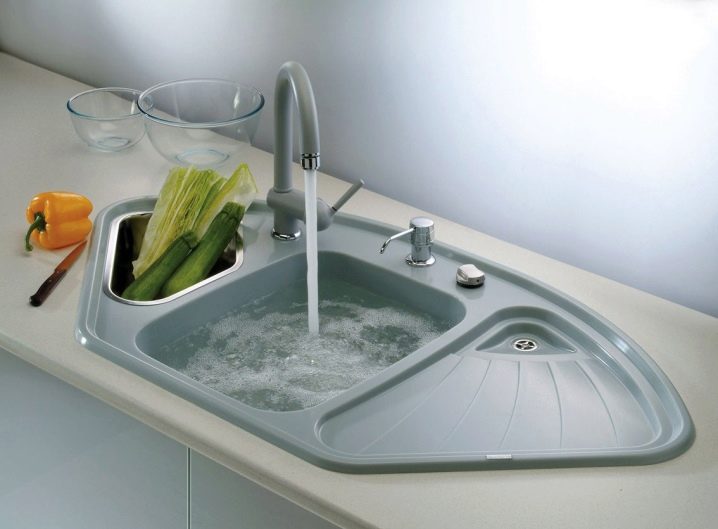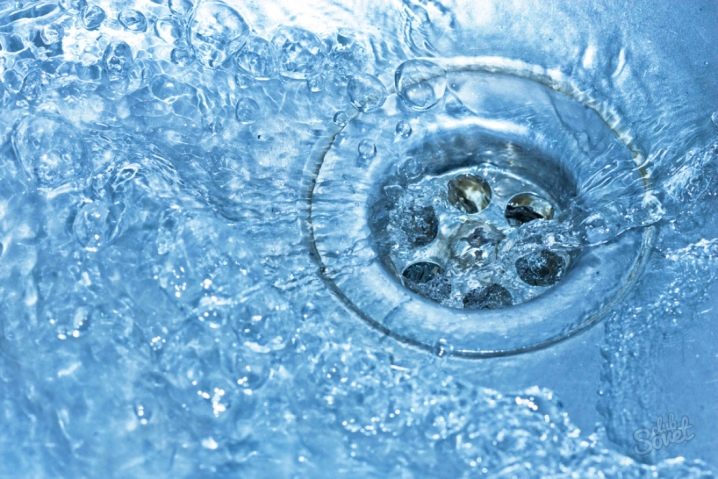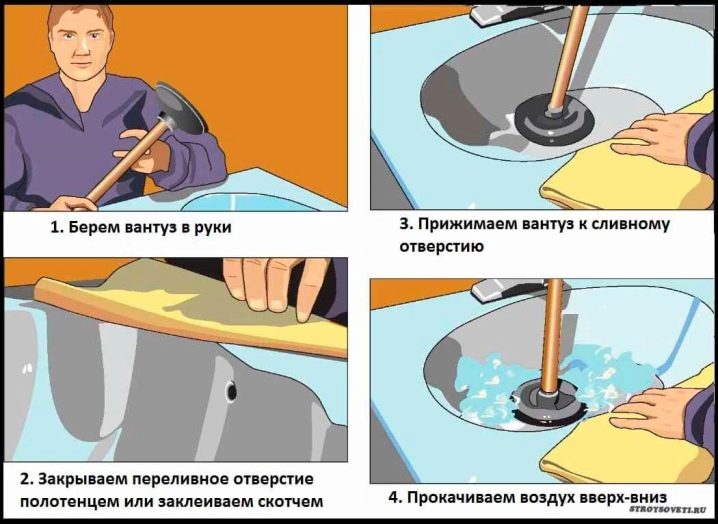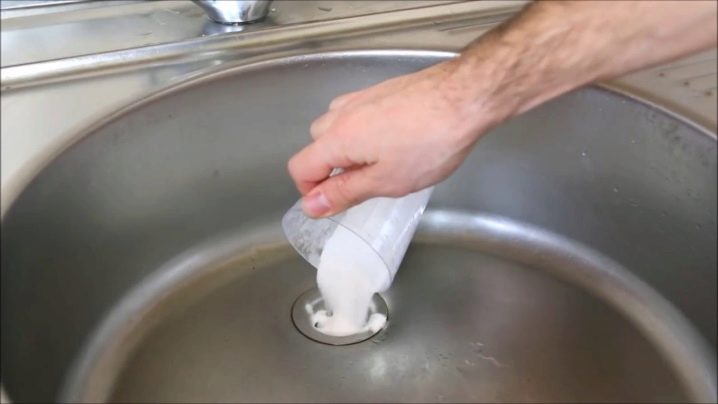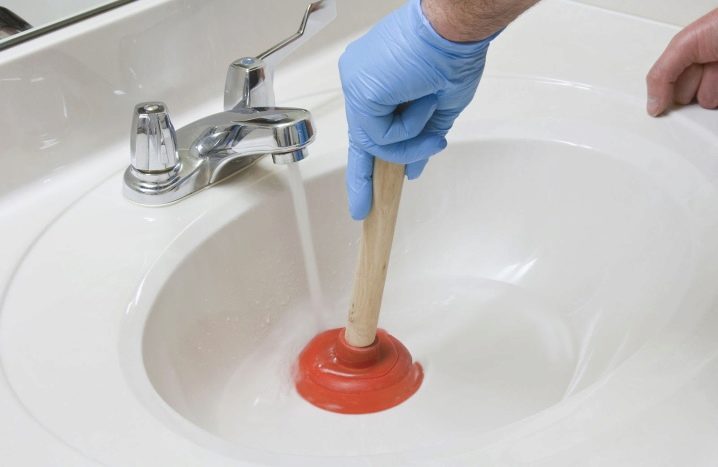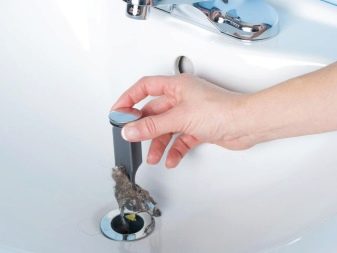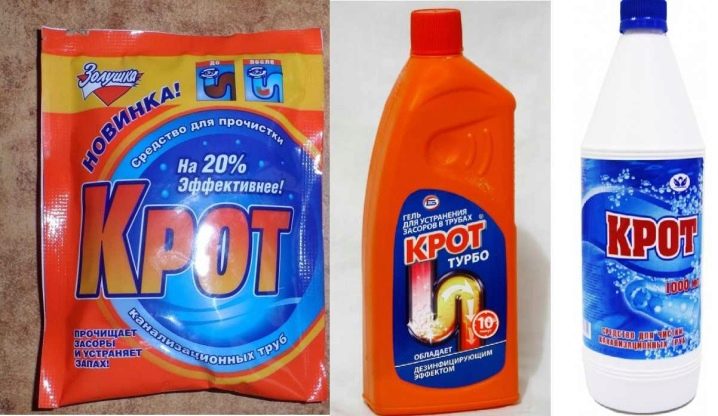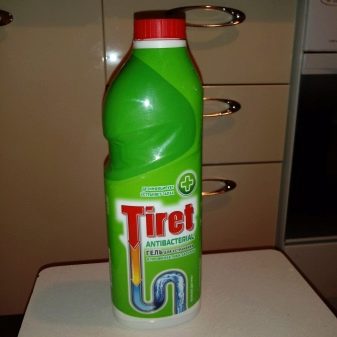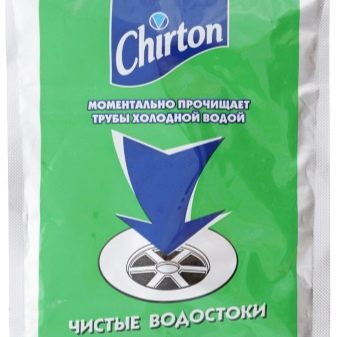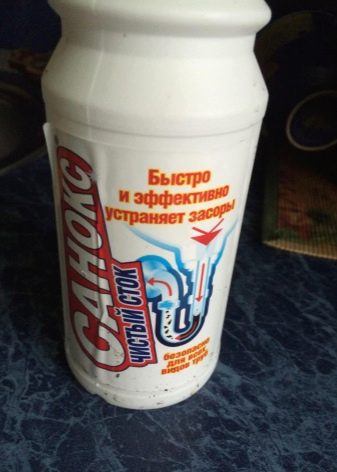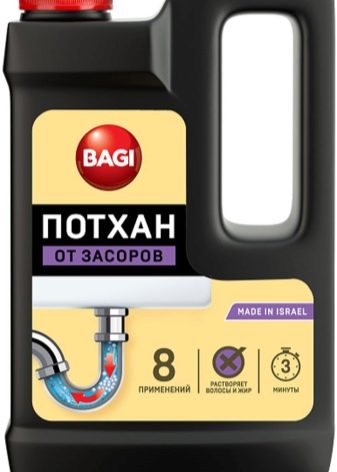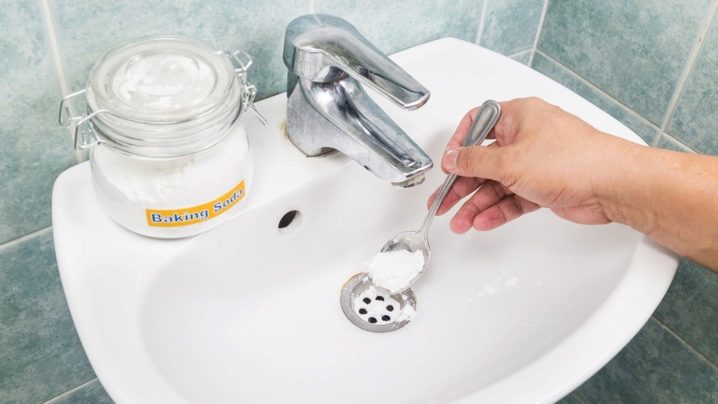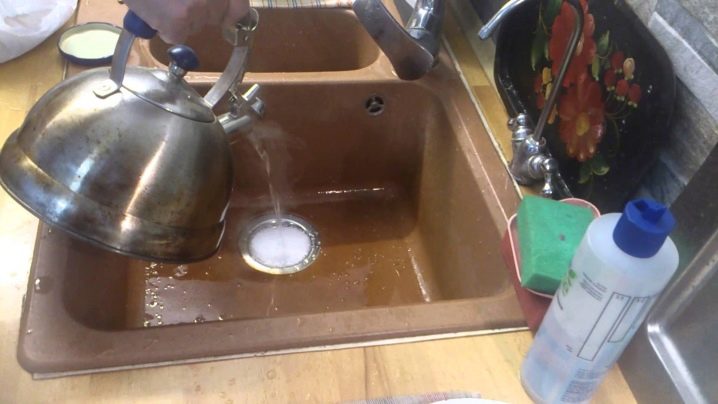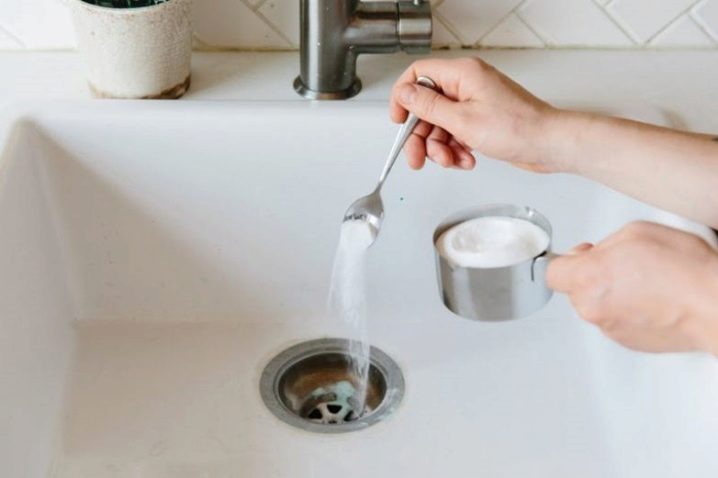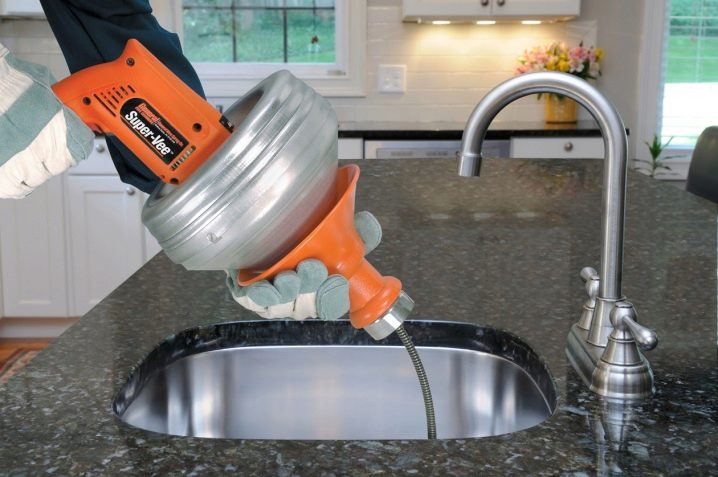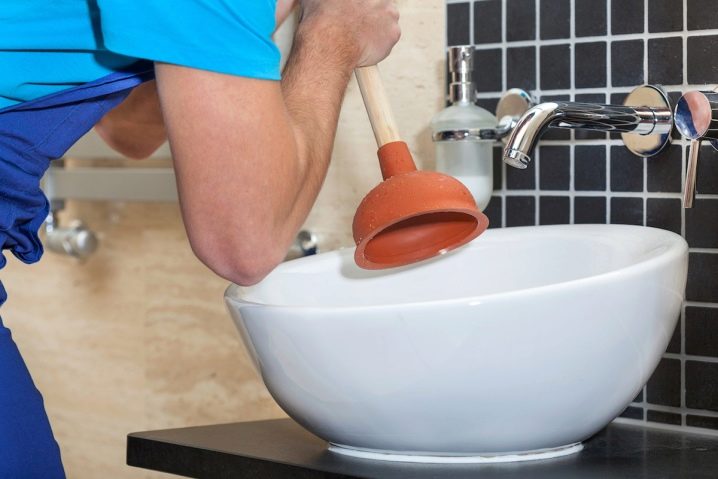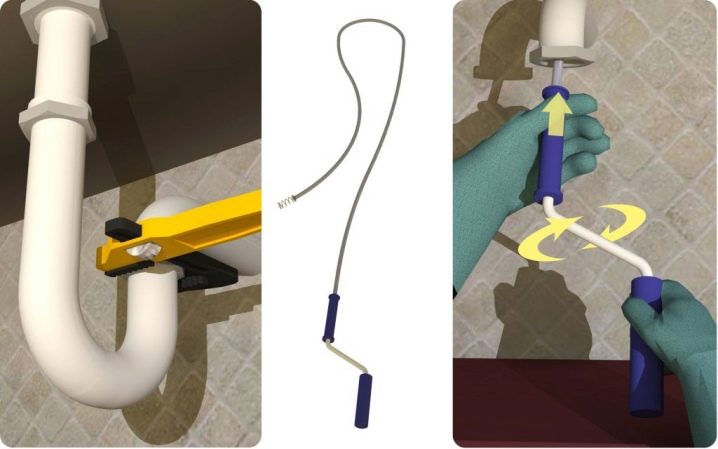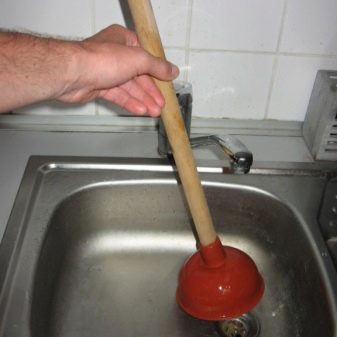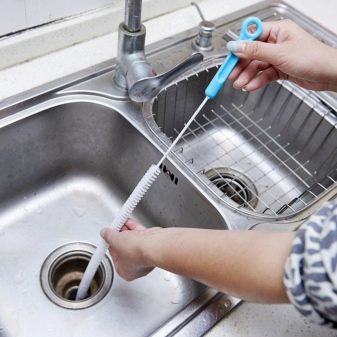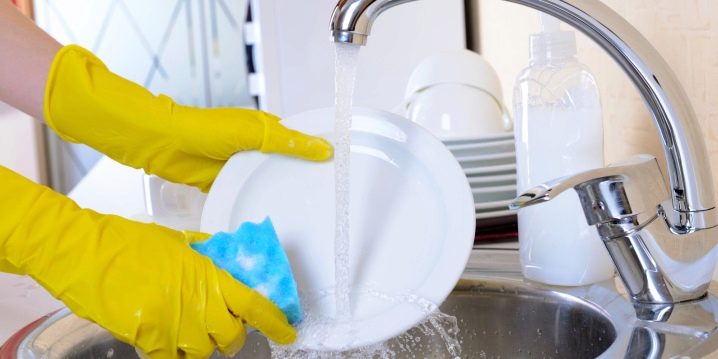How and with what help to clean the clog in the sink?
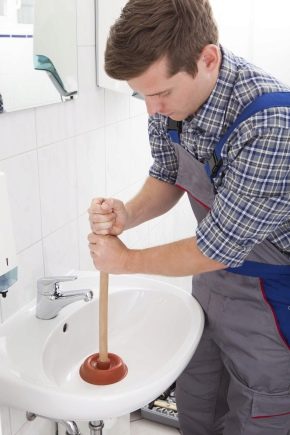
Congestion in the sink - a fairly common problem. It can slow down the use of the sink in the bathroom or kitchen and even cause an accident. With some blockages you can do it yourself, while others require the emergency services to be called immediately. Therefore, it is important to know in advance the methods of cleaning the pipes, effective folk remedies and ways to prevent the formation of blockage. All these nuances will be discussed in this article.
Occurrence: reasons
At first glance, it seems that the causes of blockages are many.
However, they can all be conditionally divided into 2 groups.
- A blockage is formed as a result of a foreign object entering the pipe - food debris, buttons, solid objects.
- The occurrence of a blockage is associated with deposits on the inner surface of the pipes, as a result of which their clearance decreases and the water does not flow well. Such growths may consist of fat and other deposits.
Clogging in the sink can have a combined cause of occurrence when a foreign object is clogged in the space that has narrowed due to deposits and build-up of the pipe.
It is important to understand the reason why the sink clogged., because the choice of the method of solving the problem depends on it. When large objects get into the pipe, mechanical methods of cleaning are usually used. When reducing the diameter of the pipe due to deposits on its surface resorted to chemical methods. Combined blockages require alternate use of chemical, and then mechanical cleaning methods. As a rule, it is possible to break through such blockages at home with your own hands.
Depending on the etiology, the "tube" in the pipe can be of several types.
- Operational clogging appears as a result of prolonged use of the shell and the absence of preventive cleansing. As a rule, in this case the pipes from the inside are covered with a layer of greasy deposits, small particles of food, hair.
- Mechanical. The cause of its occurrence is a large object caught in the pipe.
- Technical view due to improper installation of the pipeline system, the defective components. It is noteworthy that such a blockage may appear not immediately, but some time after the start of operation. To cope with the problem will only change the movement of water pipes, the replacement of nodes.
Severe blockage can be caused by hitting a foreign object in the common house riser. Such situations are dangerous, since it is not possible to eliminate the blockage on its own. The problem is usually found not only in one pipe, for example, in the bathroom, but also in the kitchen and even the toilet (in the sewer). Water does not leave and, moreover, independently, arrives, filling sinks, a toilet bowl and threatening with flooding of the room.
Cope with the trouble can only emergency service specialists. Before their arrival should shut off the water.
First steps
As already mentioned, the first step is to try to understand the cause of the blockage. If the common house pipe is blocked on the riser, you should immediately seek help from plumbing. If the blockage is local, you should try to establish its cause and choose the appropriate method of elimination. If the kitchen sink remains in the kitchen sink, it should be removed and the water should be drained from the sink. One of the cleaning methods involves the use of soda. Eliminating obstruction with soda is available, but will only help with minor congestion.
To clean the pipe, 1/3 cup of soda should be filled with 1/2 cup of vinegar., wait for a chemical reaction (the composition will begin to sizzle) and pour it into the drain hole. You should not mix the components in the glass, it is better to take a large capacity. After waiting 10 minutes, flush the hot water. Another option to clean the sink is to fill a glass of salt in the drain hole, then pour boiling water over it. By the way, boiling water - the most faithful assistant, if you want to dissolve the fat from the inner walls of pipes. You just need to pour 1-2 liters of boiling water into the drain hole. If you have metal pipes, feel free to pour boiling water, if plastic - there is enough hot water that flows from the tap.
Remedies
Cleaning of pipes should be carried out taking into account the nature of the blockage, this is the only way to guarantee a quick positive result. If it is necessary to remove a clot of welding stuck in the pipe, you can pour liters into the drain the best remedy for blockages, but only a plunger will help to eliminate it. That is why questions about what is best - special gels or plunger are meaningless. For each type of blockage there is a means.
Often a small “cork” is accompanied by an unpleasant odor coming from the drain hole. Mustard will help to cope with it. 150 grams of dry powder should be poured into the drain and let the water.
No less effective will be bleach (whiteness, bleach). It is better to use the most inexpensive of its option, since it is more concentrated. The liquid is poured into the drain (200-300 ml), left for 10 minutes. After the specified time should be put in the pipe hot water.
There are various methods to eliminate the "tube" in the sink.
- Mechanical. It is supposed to create a water hammer that pushes a blockage. It can be created by a plunger or improvised means, with the help of which it is also possible to create water hammerThe mechanical tool to clean the pipes is also a plumbing cable.
- Chemical. Assume the use of different compositions on an acid or alkaline basis, which dissolve the internal deposits on the pipes, which helps to restore their permeability. Chemicals can be shop or homemade, when using them, you should take care of the mucous membranes and skin. Acid-based formulations may be too aggressive, so they are not recommended for plastic pipes.
- Folk - mechanical and chemical methods that are not carried out specifically designed to eliminate blockages tools and compositions, and those that were at hand. For example, water hammering can be done with a stick on which rags are wound, and fat can be dissolved with citric acid.
Chemicals
Sink cleaning chemicals are available in the form of liquids, tablets or powder. The second type usually requires more time to clear the clog, manufacturers recommend to leave a tablet for the night. It is not recommended to use the sink while the pipe is clogged.Liquids are also poured into the drain hole in the amount specified in the instructions. The manufacturer also writes the exposure time, the excess of which is fraught with an unexpected result. It is necessary to wash off the chemical compositions thoroughly, preferably with hot water at maximum pressure. If the effect is not achieved after the first application or not pronounced, you can repeat the procedure. To do this, use the same composition that was used for the first time. It is unacceptable to pour into the pipe all the available means of blockages. Their components, in contact with each other, can enter into chemical reactions that have an unpredictable outcome (for example, they can provoke an explosion).
When using chemicals, it is also helpful to know the cause of the blockage. For example, to get rid of hair, soap scum in the bathroom tube will help compounds containing acids.
Today produced a large number of chemicals for cleaning pipes. The most powerful and effective are the domestic composition "Mole", the more expensive import analogue - "Tiret", as well as "Mr. Muskul". It is not recommended to use products of unknown brands."Mole" has an unpleasant smell, it is dangerous for humans. The tool is made on the basis of acid, so it is not recommended for cleaning aluminum and plastic pipes. For the latter, it is better to use "Tiret" or "Mr. Muskul". The leader among the products of this action is the Chirton tool “Clean drains” in the form of granules. One bag is enough for a single use. The tool is poured into the sink, the time of action - 15 minutes.
A similar composition, but a more aggressive action, has the Pothan granules. The disadvantage is the pungent smell of the product. It is recommended to apply to eliminate strong blockages. As a prevention, you need to use a softer product. For example, gel "Sanoks: clean stock", a bottle of which is designed for 2 applications. It will not cope with a large “traffic jam”, but it will be an excellent option from a small mash and as a preventive measure.
Regardless of the drug used, it is important to follow the following guidelines:
- strictly follow the rules specified in the manufacturer's instructions;
- protect the skin of the hands and respiratory organs, prevent the composition from reaching mucous membranes;
- protect these products from children;
- use formulations in well ventilated areas;
- rinse with plenty of water;
- do not use at the same time or one after another different formulations.
Folk
The first helpers to remove blockages are always in the kitchen salt, soda and boiling water. You can enhance the effect by mixing salt with soda or adding vinegar to the soda. A loose stopper can be removed using a granular powder for washing. 3 measuring spoons of powder are poured into the drain hole, after which water is turned on for 5 minutes. It is better if the water is hot with maximum pressure.
If possible, the direction of the jet should go directly to the sink. Instead of water, you can use hot broth after cooking potatoes. It will not only help dissolve fatty deposits, but also eliminate the unpleasant smell. If these methods are ineffective, and the sewage odor is in the whole house, you should place an application in the housing office and call the plumber. The reason for the bad smell in clogged sewer pipes. When the specialist cleans them up, you can repeat the steps with bleach.
Odor can appear when cracks form on cast iron pipes. In this case, they must be replaced or (if the crack is small and single), the crack is sealed with a viscous cement. Efficiency is demonstrated by another popular method. 2 tablets of Alka-Seltzer (a pharmaceutical preparation for intoxication and hangover) are placed in a drain hole and filled with a glass of vinegar. The reaction should take at least 2 minutes, after which hot water should be turned on under great pressure. This method allows you to get rid of a small tube and eliminate the unpleasant smell from the pipe.
Mechanical
Mechanical methods involve cleaning the pipe by creating a powerful water hammer that literally knocks out the cork. Usually for these purposes use the plunger.
It is quite simple to use it:
- The drain hole is closed by the bowl of the plunger. It is important that its diameter is larger than the diameter of the drain.
- Holding the tool by the handle, make a few pushes towards the pipe, the drain.
- Such movements need to be done 15-20, then sharply pull the plunger up.
If there is water left in the sink, you can not scoop it out before using the plunger.The main thing is to position the tool bowl so that it is covered with water. If there is an overflow hole in the sink or bathroom, it should be closed (with a special stopper or cloth), otherwise cleaning will be useless. If the action does not bring the desired effect, you can fill in a drain hole mixture of salt and soda, taken in equal proportions. After that, you need to pour 200 ml of hot water into the drain, wait 15 minutes and proceed to piercing the “plug” with a plunger.
If, after using the device, debris or other contaminants come out of the drain hole, they should not be flushed back, but should be removed with a paper towel or toilet paper and thrown into the trash can. This device is not the only tool that allows you to pierce the "plug". You can create a water hammer without a plunger, for example, using a plumbing cable.
Its use implies the following actions:
- The cable must be pushed into the drain hole until you feel it is resting on something.
- If you feel the blockage, start making up and down movements while scrolling through it.
- As soon as you feel that the cable slides along the pipe without encountering any obstacles, the blockage is removed.
Instead of a cable, if one is not available, suitable things with a similar construction, for example, a country hose of suitable diameter, will also be suitable. By mechanical methods of getting rid of the plug can be attributed unscrewing and further cleaning the siphon. The first thing to do is to place an empty bucket under the sink. The next step is to remove the siphon using a wrench. Then, wearing gloves or using a screwdriver, clean the inner surface of the siphon, rinse those parts that you managed to remove (for example, the cover). After that, collect the siphon, check the tightness of the device.
Prevention: Tips
- The most reliable preventive method is to prevent foreign objects and fat from entering the sink siphon. To do this, the kitchen sink must be equipped with a removable mesh that is installed on the drain hole. It will prevent food particles from entering the drain.
- Washing dishes should begin with mechanical cleaning, that is, the removal of food particles or welding. It is unacceptable to drain the fat after frying or fatty broth in the sink.Grease dishes first carefully rubbed with a paper towel, which is thrown into the trash.
- Similarly, you should approach the washing of the teapot. The sleeping tea is thrown away, after which the walls of the dishes are wiped with a paper towel. Only after that you can start washing. The fact is that, getting into the pipe, the tea leaves get stuck in its bends, and gradually this lump grows and becomes rigid. The result is a cork, and in a remote place.
- Similarly, a cork is formed when paper or fillers for trays of pets get into the tube. At first they are easily washed into the drain hole, but then they settle on the pipe walls and increase in size. The result - a strong blockage from which not to get rid of chemicals.
- Dishwashing detergent should be used for washing dishes. As a rule, wipe the sink with each other after each use and rinse it with hot water. As a preventive measure, hot water is recommended for half a minute every day in the evenings.
- Once a week, 3-5 liters of boiling water can be washed into the sink.After 5-10 minutes, you should use the plunger. Such actions are easy to do yourself, they will dissolve fat plugs and get rid of minor blockages.
- An effective prophylactic agent is a composition based on citric acid, soda and salt. The ratio of the last two components should be the same, citric acid - only half. The resulting composition is mixed and poured into the pipe, after which a glass of boiling water is poured there. After waiting for 5 minutes, you should drain a large amount of warm water.
- You can also periodically use the funds from blockages as a preventive. They are recommended to be used once or twice a year. Excessive use of aggressive chemicals can cause the destruction of plastic pipes, deterioration of the shell cover or bath. It is necessary to fill the composition in the pipe at night, and in the morning to wash off with plenty of water. This will help prevent the formation of traffic jams and quickly get rid of a small blockage.
- Installation of a special grinder in the sink will help prevent the ingress of food particles into the pipe. Before you purchase it,make sure the selected device is compatible with your bathroom fixtures.
- If cleaning the pipes with your own hands does not bring a positive result, you will need the help of plumber. Most likely, it will use an automatic pipe cleaner or hydrodynamic nozzle.
As folk remedies to clear the blockage, see the following video.
